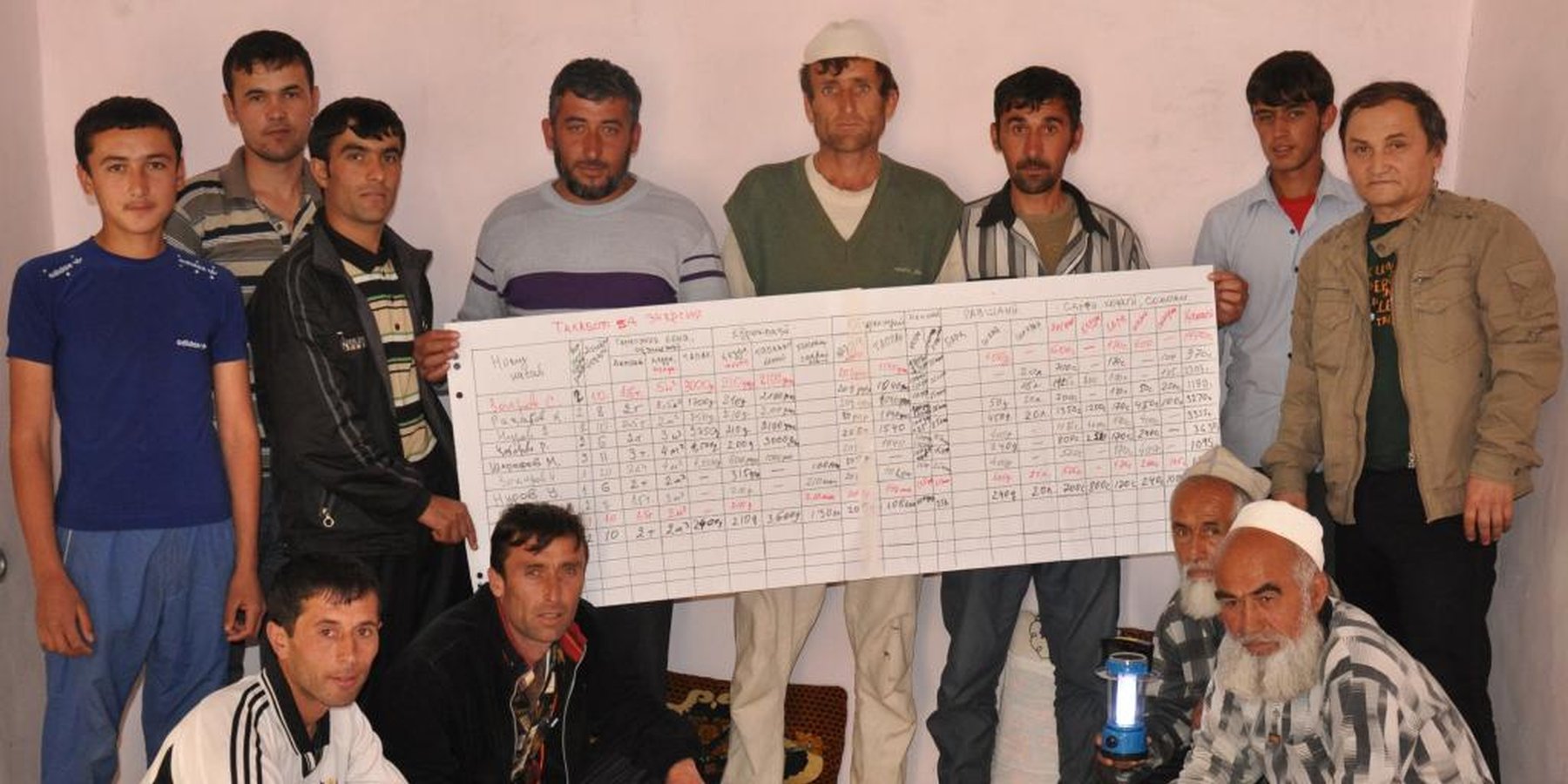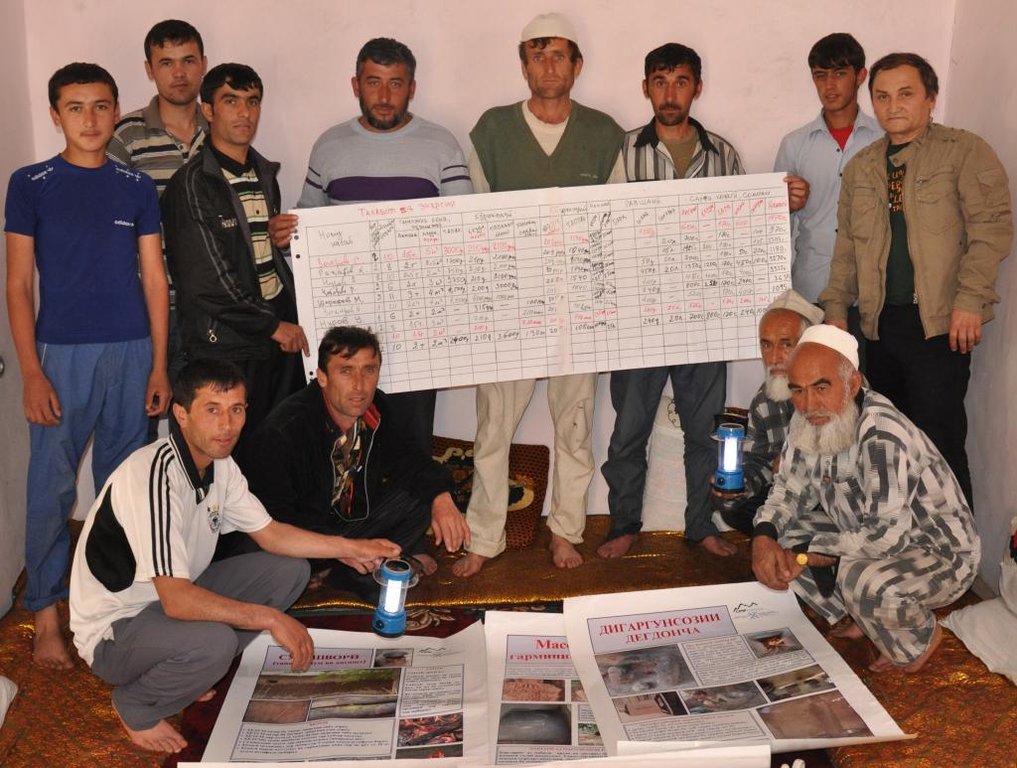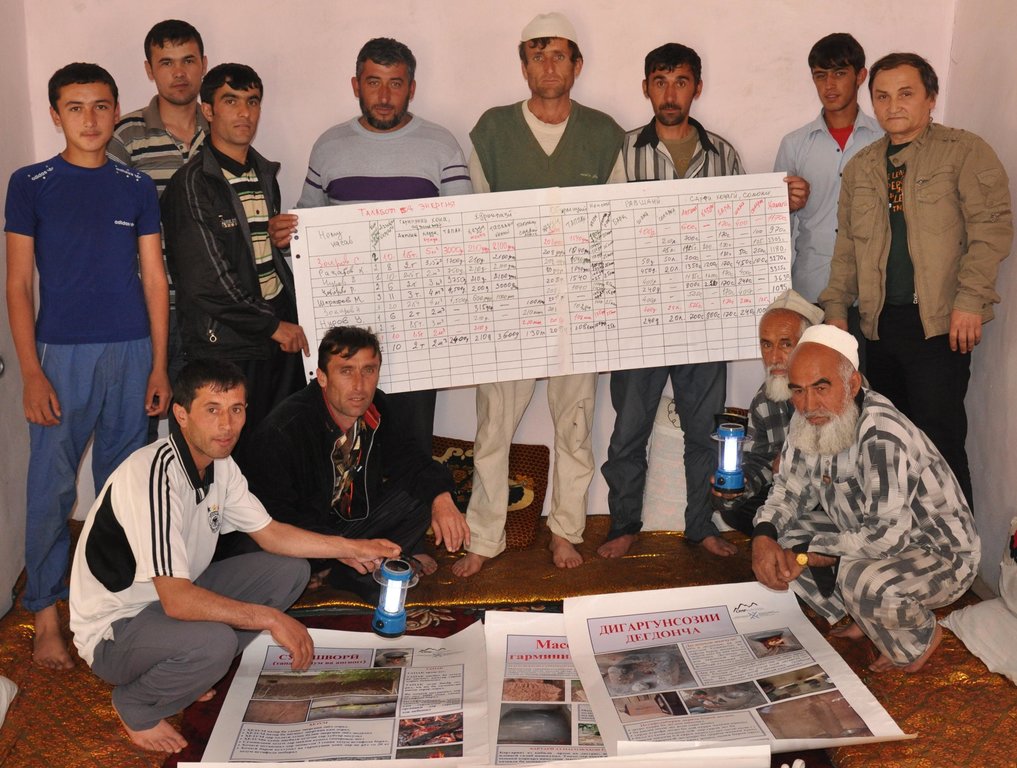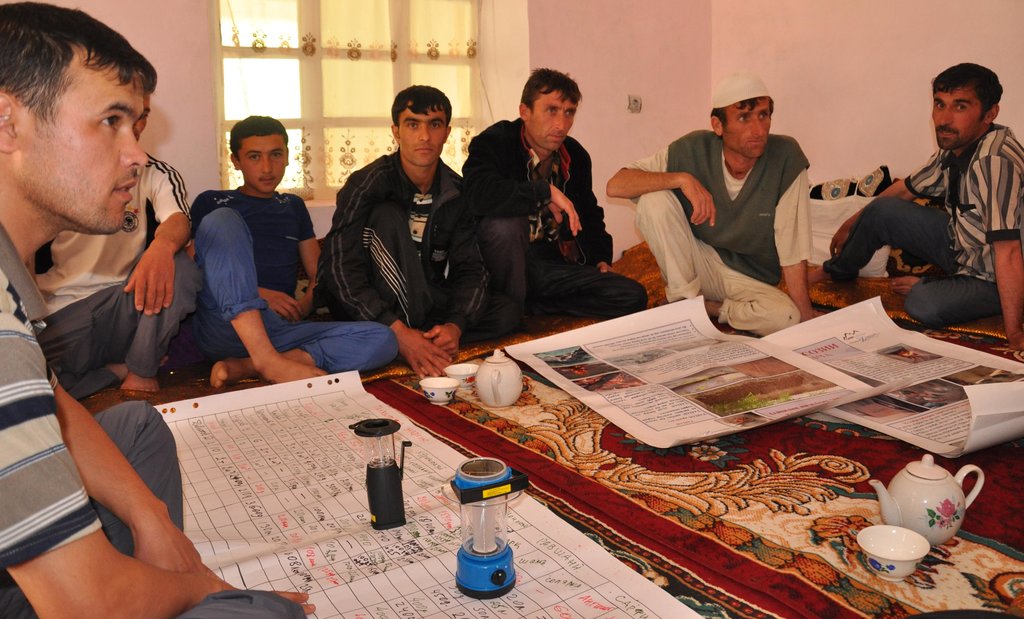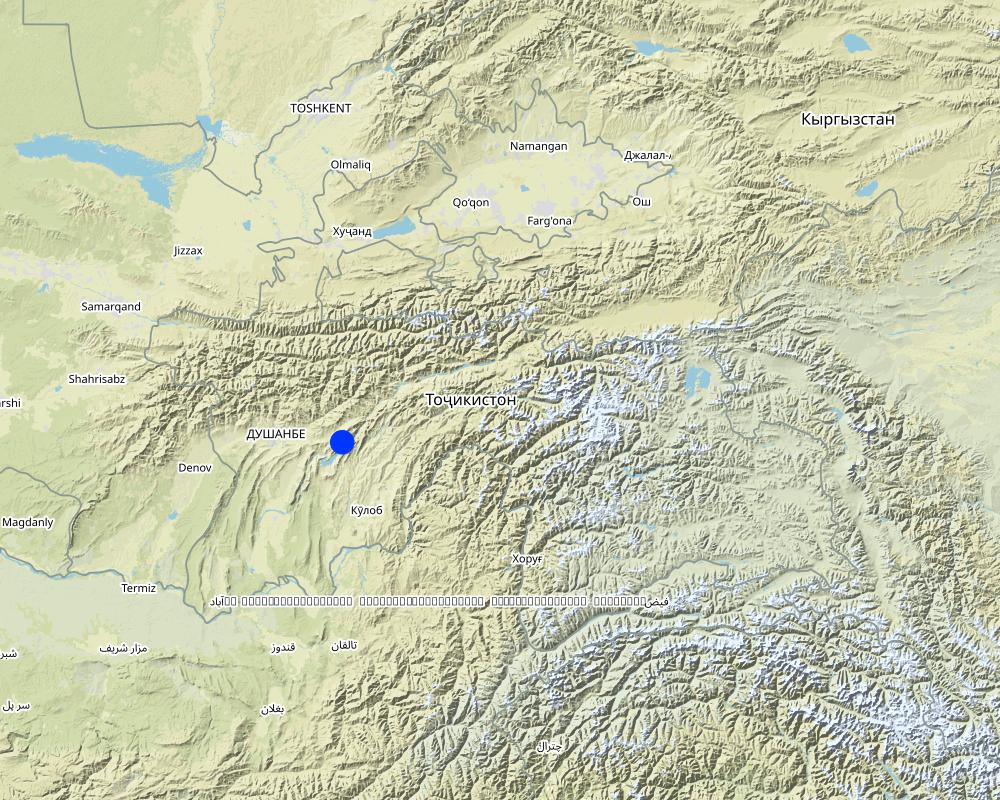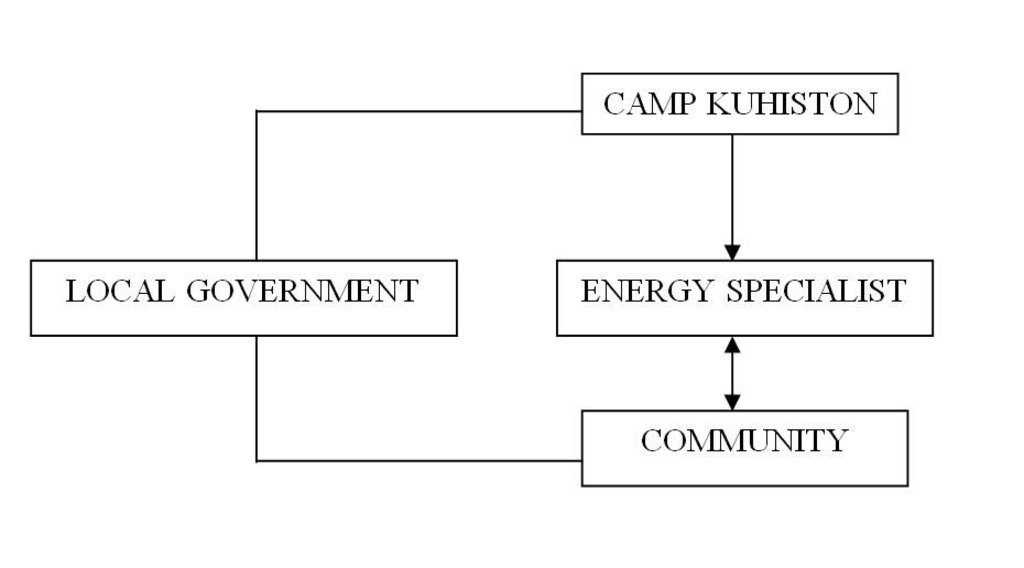Participatory Cost Benefit Analysis for Energy Efficiency Measures [Tadjikistan]
- Création :
- Mise à jour :
- Compilateur : shane stevenson
- Rédacteur : –
- Examinateurs : David Streiff, Alexandra Gavilano, Joana Eichenberger
approaches_2442 - Tadjikistan
Voir les sections
Développer tout Réduire tout1. Informations générales
1.2 Coordonnées des personnes-ressources et des institutions impliquées dans l'évaluation et la documentation de l'Approche
Spécialiste GDT:
Pochoev Mirzo
992 44 601 55 05
CAMP Kuhiston
Dushanbe
Tadjikistan
Nom du projet qui a facilité la documentation/ l'évaluation de l'Approche (si pertinent)
Pilot Program for Climate Resilience, Tajikistan (WB / PPCR)Nom du ou des institutions qui ont facilité la documentation/ l'évaluation de l'Approche (si pertinent)
CAMP - Central Asian Mountain Partnership (CAMP - Central Asian Mountain Partnership) - Kirghizistan1.3 Conditions relatives à l'utilisation par WOCAT des données documentées
Quand les données ont-elles été compilées (sur le terrain)?
25/04/2011
Le compilateur et la(les) personne(s) ressource(s) acceptent les conditions relatives à l'utilisation par WOCAT des données documentées:
Oui
1.4 Références au(x) questionnaire(s) sur les Technologies de GDT
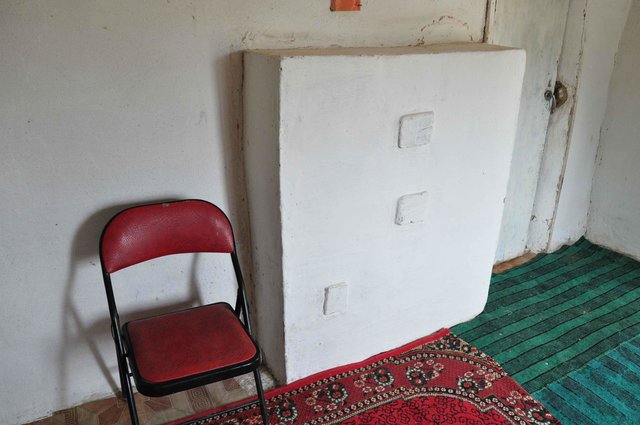
Two Room Stove [Tadjikistan]
A brick stove that is built into the existing internal wall, that will heat the two rooms and can be used for cooking.
- Compilateur : shane stevenson
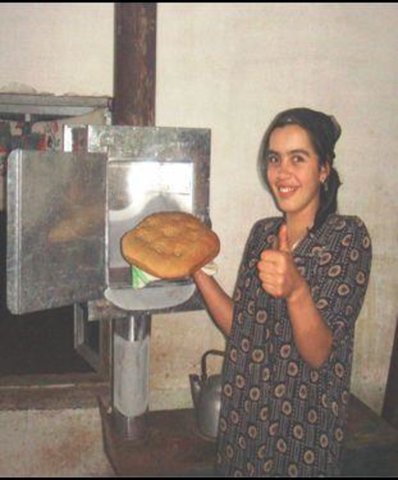
Energy efficiency measures to increase the application of … [Tadjikistan]
The implementation of several low cost energy efficiency measures to reduce the amount of organic material used as fuel within rural households.
- Compilateur : Daler Domullojonov
2. Description de l'Approche de GDT
2.1 Courte description de l'Approche
The use of a cost benefit analysis approach to assess the financial and natural resource needs for energy consumption at community level, and further attribute costs to SLM practices to meet this need, and subsequently improve rural livelihoods.
2.2 Description détaillée de l'Approche
Description détaillée de l'Approche:
Aims / objectives: To collate quantitative data on the amount of energy used within the community in terms of financial expenditure and natural resource use. Through the use of a participatory workshop the attendees determine which natural resources are being utilised, in the form of wood, bush and organic materials. The objective is to use this quantitative data to encourage through cost benefit demonstrations, the implementation of Sustainable Land Management technologies to reduce the amount of natural resources exploited, and the expenditure on energy consumption.
Methods: An energy specialist organises a community based workshop with up to 15 participants. In the 2-3hr workshop the participants complete, under guidance, a pre prepared flip chart on energy use (electric, tapak, wood, coal, brush). The information is collected in financial expenditure and weight. Once the energy assessment is completed a subsequent discussion is encouraged on how to more effectively meet this need at a community level. The moderator also takes this oppoprtunity to demonstrate several technologies including solar lights, improved stove design, thermal insulation, and the development of energy forests. The information is collated and used as a baseline assessment for evaluation of implemented technologies.
Stages of implementation: The stages of implementation are relatively straight forward. First you must select the community that you wish to work in, and inform a community mobiliser, in this case the head of the village that you wish to conduct a 2-3 hr workshop for up to 15 participants, and that the participants must be the person in the households who is responsible (or has knowledge of) the energy use within the household. The moderator prepares a flip chart with a table of fuel types used in the village and uses this as the basis of the workshop to extract information on energy use within the community. Once the information is collated, a discussion is encouraged to review the information and devise means by which this amount can be reduced. The moderator then takes this opportunity to demonstrate several low cost energy efficiency measures that may appeal to the community.
Role of stakeholders: The community are expected to attend the workshop, engage in active discussions on their energy use and ways in which it can be reduced. The workshop needs to be supported by the local government, this provides gravitas, and a platform to launch the approach in other communities. The final stakeholder is the implementer, in this case a local NGO who organises the workshop, demonstrates the technologies and provides ongoing support during the implementation of the technologies.
Other important information: It is important to understand the spending habits of the participants, if they are used to spending on a day to day basis and not used to financial planning, it is important to recognise this fact in the implementation of the technology.
2.3 Photos de l'approche
2.5 Pays/ région/ lieux où l'Approche a été appliquée
Pays:
Tadjikistan
Région/ Etat/ Province:
RRS
Autres spécifications du lieu :
Nurobod, Shaftuti Bolo
Map
×2.6 Dates de début et de fin de l'Approche
Indiquez l'année de démarrage:
2011
Date (année) de fin de l'Approche (si l'Approche n'est plus appliquée):
2012
2.7 Type d'Approche
- fondé sur un projet/ programme
2.8 Principaux objectifs de l'Approche
The Approach focused mainly on SLM with other activities (Energy Conservation)
There were two main objectives to this approach, the first was to raise awareness on energy use with respect to types of energy, cost and accessibility, and to use this as a platform for encouraging the implementation of low cost energy efficiency measures in the community. The second was to collate baseline data to allow an assessment of how the implemented technologies impacted on energy (and by association natural resources) use and how the expenditure and amounts were reduced in real terms.
The SLM Approach addressed the following problems: This approach was designed to make the participants evaluate and assess the amount of money, time and effort that goes into meeting their energy needs. It is also a clear and precise way to collate information on the amount of natural resources that are been used to meet this need. These natural resources can be in the form on bushes, wood, dung, cotton sticks etc. These resources are being redirected from other purposes such as construction, but also as natural fertilisers, mulch and compost. This directly impacts on agricultural production, household finance and ultimately livelihoods. The reduction in resource use can reduce the risk of conflicts between villages, and reduce pressure on natural resources allowing them to rejuvenate, and increase soil fertility and quality.
2.9 Conditions favorisant ou entravant la mise en œuvre de la(des) Technologie(s) appliquée(s) sous l'Approche
normes et valeurs sociales/ culturelles/ religieuses
- entrave
Rural communities emerging from the soviet system have very low business awareness. Even when there are seemingly obvious savings to be made in finance and natural resources there is a lack of appreciation of the potential savings that could be made.
Treatment through the SLM Approach: Discussion on the issue of savings in time, money and resources helps promote better understanding. The concept of pay back had to be repeatedly explained.
cadre juridique (régime foncier, droits d'utilisation des terres et de l'eau)
- favorise
- entrave
charge de travail, disponibilité de la main-d'œuvre
- entrave
There are times of year when the village participants are otherwise distracted by sowing seeds, harvesting, Ramadan etc.
Treatment through the SLM Approach: The most effective time would be at the end of the winter period when resources are scarce, money constraints are more apparent and energy use is a household priority issue.
autre
- entrave
In many of the households the men are working away in Russia. This leaves the women in charge of the household, however, many of the energy costs are organised by the men before they leave or on their return.
Treatment through the SLM Approach: Many of the labour migrant leave in the springtime, therefore it would be more effective to organise the workshops at the end of the winter before they leave.
3. Participation et rôles des parties prenantes impliquées dans l'Approche
3.1 Parties prenantes impliquées dans l'Approche et rôles
- exploitants locaux des terres / communautés locales
A representative from each household in the community was involved.
Women hold a traditional role in the society and did not participate in the workshops. The men pay all the bills and see their role as that of the provider for the family.
The entire village suffers from mass labour migration, with nearly all households reliant upon remittances from Russia.
- Spécialistes de la GDT/ conseillers agricoles
International support and finance was provided for this approach, however, the questionnaire was developed in collaboration between national and international staff to ensure relevance and applicability to the context.
- ONG
CAMP Kuhiston
Si plusieurs parties prenantes sont impliquées, indiquez l'organisme chef de file ou l'institution responsable:
CAMP Kuhiston
3.2 Participation des exploitants locaux des terres/ communautés locales aux différentes phases de l'Approche
| Participation des exploitants locaux des terres/ communautés locales | Spécifiez qui était impliqué et décrivez les activités | |
|---|---|---|
| initiation/ motivation | aucun | |
| planification | aucun | |
| mise en œuvre | auto-mobilisation | they were active in the participation in the workshops and the collation of data. |
| suivi/ évaluation | soutien extérieur | Active in providing follow-up data to evaluate the success of the project. |
| Research | aucun |
3.3 Diagramme/ organigramme (si disponible)
Description:
The project employs an energy specialist to conduct a participatory workshop. The process is supported by the local government.
Auteur:
S. Stevenson (CAMP Kuhiston, Dushanbe)
3.4 Prises de décision pour la sélection de la Technologie/ des Technologies
Indiquez qui a décidé de la sélection de la Technologie/ des Technologies à mettre en œuvre:
- principalement les exploitants des terres soutenus par des spécialistes de la GDT
Expliquez:
The participants are presented with a range of potential energy efficiency technologies such as stove adaptation, thermal insulation by experts, however, it is the participants decision as to which technologies are the most appropriate for their communtiy, and how they can implemented.
Decisions on the method of implementing the SLM Technology were made by mainly by land users supported by SLM specialists. One technology involved the adaptation of traditional cooking stoves; demonstrations were provided however, the mechanisms for securing the materials and ensuring the entire village implemented the technology were up to the discretion of the participants.
4. Soutien technique, renforcement des capacités et gestion des connaissances
4.1 Renforcement des capacités/ formation
Une formation a-t-elle été dispensée aux exploitants des terres/ autres parties prenantes?
Oui
Spécifiez qui a été formé:
- exploitants des terres
Si pertinent, spécifiez le genre, l'âge, le statut, l'ethnie, etc.
The initial training was for all the households in the village, however, only the men attended due to the religious and cultural position of the region.
Formats de la formation:
- cours
Thèmes abordés:
The training included raising awareness on stove adaptation, indoor two room stove construction, solar power, and low cost thermal insulation for rooms.
4.2 Service de conseils
Les exploitants des terres ont-ils accès à un service de conseils?
Non
4.3 Renforcement des institutions (développement organisationnel)
Des institutions ont elles été mises en place ou renforcées par le biais de l'Approche?
- oui, modérément
Spécifiez à quel(s) niveau(x), ces institutions ont été renforcées ou mises en place:
- local
Précisez le type de soutien:
- financier
Donnez plus de détails:
The Jephcott Foundation financed local NGO CAMP Kuhiston to implement the approach.
4.4 Suivi et évaluation
Le suivi et l'évaluation font ils partie de l'Approche? :
Oui
Commentaires:
socio-cultural aspects were regular monitored by project staff through observations; indicators: Observations of participants understanding of economic benefits.
management of Approach aspects were ad hoc monitored by None through observations; indicators: international staff monitor the set up of the workshops and levels of participation.
There were few changes in the Approach as a result of monitoring and evaluation: The timing of the workshops (i.e the time of year) will be changed to the end of the winter when energy use is more of a priority issue, e.g. cold weather, poor electric supply, lack of easily accessible natural resources
There were no changes in the Technology as a result of monitoring and evaluation: None
4.5 Recherche
La recherche a-t-elle fait partie intégrante de l’Approche?
Oui
Spécifiez les thèmes:
- sociologie
- économie/ marketing
Donnez plus de détails et indiquez qui a mené ces recherches:
CAMP Kuhiston collated data on energy usage and by association natural resource use. In addition to the participatory workshop CAMP conducted a household questionnaire to assess the suitability of different energy efficiency technologies, and the social vulnerability of the inhabitants, to identify the most effective households to implement energy saving activities.
Research was carried out on-farm
5. Financement et soutien matériel externe
5.1 Budget annuel de la composante GDT de l'Approche
Si le budget annuel précis n'est pas connu, indiquez une fourchette:
- < 2 000
Commentez (par ex. principales sources de financement/ principaux bailleurs de fonds):
Approach costs were met by the following donors: international non-government (Jephcott Foundation, UK): 100.0%
5.2 Soutiens financiers/ matériels fournis aux exploitants des terres
Les exploitants des terres ont-ils reçu un soutien financier/ matériel pour la mise en œuvre de la Technologie/ des Technologies?
Non
5.3 Subventions pour des intrants spécifiques (incluant la main d'œuvre)
- équipement
| Spécifiez les intrants subventionnés | Dans quelle mesure | Spécifiez les subventions |
|---|---|---|
| Posters and stationery | entièrement financé | |
- matériaux de construction
| Spécifiez les intrants subventionnés | Dans quelle mesure | Spécifiez les subventions |
|---|---|---|
| Metal sheets, demonstration material | entièrement financé | |
Commentaires:
Metal sheets and some other basic materials were provided for the demonstration adaptation of the outdoor cooking stoves.
5.4 Crédits
Des crédits ont-ils été alloués à travers l'Approche pour les activités de GDT?
Non
5.5 Autres incitations ou instruments
D'autres incitations ou instruments ont-ils été utilisés pour promouvoir la mise en œuvre des Technologies de GDT?
Oui
Si oui, spécifiez:
The Jephcott Foundation financed local NGO CAMP Kuhiston to implement the approach.
6. Analyses d'impact et conclusions
6.1 Impacts de l'Approche
Est-ce que l'Approche a aidé les exploitants des terres à mettre en œuvre et entretenir les Technologies de GDT?
- Non
- Oui, un peu
- Oui, modérément
- Oui, beaucoup
The extent to which it will reduce the amount and type of natural resource use will be re assessed at the end of the project. It is estimated that there will be a 20% reduction.
Est-ce que l'Approche a autonomisé les groupes socialement et économiquement défavorisés?
- Non
- Oui, un peu
- Oui, modérément
- Oui, beaucoup
The approach was implemented in a socially disadvantaged area.
Did other land users / projects adopt the Approach?
- Non
- Oui, un peu
- Oui, modérément
- Oui, beaucoup
Did the Approach lead to improved livelihoods / human well-being?
- Non
- Oui, un peu
- Oui, modérément
- Oui, beaucoup
The stove adaptation should lead to a 10-20% reduction in natural resources used for cooking, and the solar lights could make a $100/year saving.
Did the Approach help to alleviate poverty?
- Non
- Oui, un peu
- Oui, modérément
- Oui, beaucoup
It should help reduce spending on energy, dependence on natural resources, and increase the amount of organic materials for agricultural purposes.
6.2 Principale motivation des exploitants des terres pour mettre en œuvre la GDT
- augmenter la rentabilité/ bénéfice, rapport coûts-bénéfices
The approach is designed to highlight to households how much of their income they spend on energy.
- prestige, pression sociale/ cohésion sociale
Social pressure ensured all the households participated.
- well-being and livelihoods improvement
Improvement in living conditions and saving of finance and natural resources.
6.3 Durabilité des activités de l'Approche
Les exploitants des terres peuvent-ils poursuivre ce qui a été mis en œuvre par le biais de l'Approche (sans soutien extérieur)?
- incertain
Si non ou incertain, spécifiez et commentez:
The participants will be encouraged to re-assess their natural resource use in the following year, and hopefully instigate their own measures to tackle the issue.
6.4 Points forts/ avantages de l'Approche
| Points forts/ avantages/ possibilités du point de vue de l'exploitant des terres |
|---|
| Quick and simple way to put an economic cost on fuel use. |
| Points forts/ avantages/ possibilités du point de vue du compilateur ou d'une autre personne ressource clé |
|---|
| The approach needs minimal resources and is relatively easy to implement. (How to sustain/ enhance this strength: It would be easy to replicate and easy to teach others how to undertake the approach.) |
| It makes participants evaluate what they need to run their households, and puts an economic and natural resource value on the process. |
| It helps focus the participants on how much time, effort and money are being used to run their household. (How to sustain/ enhance this strength: To follow up, to see how effective the implementation of the technologies was in reducing their energy needs.) |
| The scope of the level of participation is flexible and can be adapted to the contexts. It allows for direct comparison for before and after the implementation of the technology. (How to sustain/ enhance this strength: It could be further developed to put an economic value on SLM technologies.) |
6.5 Faiblesses/ inconvénients de l'Approche et moyens de les surmonter
| Faiblesses/ inconvénients/ risques du point de vue du compilateur ou d'une autre personne ressource clé | Comment peuvent-ils être surmontés? |
|---|---|
| It requires participants to have good quality data available to be effective. | Complete follow up visits to households to check data quality. |
7. Références et liens
7.1 Méthodes/ sources d'information
- visites de terrain, enquêtes sur le terrain
- interviews/entretiens avec les exploitants des terres
Liens et modules
Développer tout Réduire toutLiens

Two Room Stove [Tadjikistan]
A brick stove that is built into the existing internal wall, that will heat the two rooms and can be used for cooking.
- Compilateur : shane stevenson

Energy efficiency measures to increase the application of … [Tadjikistan]
The implementation of several low cost energy efficiency measures to reduce the amount of organic material used as fuel within rural households.
- Compilateur : Daler Domullojonov
Modules
Aucun module trouvé


